
11 minute read
GIFT GUIDE
beautyprocedure
PHOTOGRAPH BY GETTY IMAGES
WAITING TO EXHALE
Why hundreds of thousands of women with a nose for beauty are opting for rhinoplasty.
By Catherine Winters
ou can’t not notice a person’s nose. Made up of bone and cartilage, it’s smack in the middle of the face for all the world to see. Lots of people are lucky to have a nose that’s just right, but plenty of people hate their noses, viewing that front-and-center feature as too big, too bumpy, or too crooked. Whether the flaw is truly attentiongrabbing or barely noticeable, it’s enough to affect the selfesteem of the most sound of ego. (Jennifer Grey, anyone?)
That may be why some 217,000 people in the U.S. chose a nose full of change last year, making rhinoplasty the second most popular cosmetic surgical procedure after breast augmentation, according to the American Society of Plastic Surgeons. And though some of us may associate nose jobs with teenagers of angst and privilege, more and more grown women are having them. In 2014, nearly 68,000 women age 35 and older opted for rhinoplasty; of these, 16,712 were between 51 and 64 and more than 8,800 were 65 and older, reports the American Society for Aesthetic Plastic Surgery (ASAPS).
Why the surge in popularity? “With more discretionary income, these people can now take care of something that has bothered them for much of their lives,” says Los Angeles plastic surgeon Brent Moelleken, M.D., a member of the ASAPS. The passage of time is also a factor. As we age, our face loses its natural fullness as fat cells melt away and nose cartilage becomes more obvious. “Now the nose that once was a normal size seems huge and bony,” adds Dr. Moelleken. Other reasons: Some people may be unhappy with the nose job they had years before or can’t breathe well and want to combine surgery for, say, a deviated septum with a little nose tweaking in the mix. surgical procedure employed to correct a deviated septum, an off-center locale of the thin wall of bone and cartilage that separate your nostrils, which can affect ease in breathing and sinus drainage. The turbinates—long, curved, spongy bones inside the nose that warm and moisturize the air we
BEAK TWEAKS
➜ It’s inarguable: Rhinoplasty can transform a nose, fine-tuning this focal point to personal perfection. “[It] can reduce or increase the size of your nose, change the shape of the tip or bridge, narrow the span of your nostrils, or change the angle between your nose and upper lip,” offers Dr. Moelleken.
Along with rhinoplasty, there might be some corrections other than aesthetic when opting to put your nose under the knife. Some people may also have a septoplasty, the breathe and direct air flow to the lungs—can become downright turbulent, enlarging and blocking air flow instead of aiding it. These might require surgical help as well.
Non-surgical rhinoplasty, which involves injecting fillers into the nose, is an option for people whose issues are purely aesthetic. “It completely changes a person’s nose,” says Los Angeles cosmetic surgeon Alexander Rivkin, M.D., who pioneered the procedure. “I can camouflage a bump, lift the bridge of the nose, straighten a nose that’s a little crooked, and even lift the tip.”
HOW IT’S DONE
➜ Traditional rhinoplasty is typically done under general anesthesia. The surgeon makes tiny incisions at the bottom of the nose, inside the nostrils, and uses an endoscope for guidance. What is ultimately done during surgery, however, depends upon your goals entirely.
Your surgeon may file or break bone to reposition the nose, or remove or add extra cartilage. For example, to scale down a full tip, the surgeon will remove cartilage, or may restore fullness to a droopy tip with a cartilage graft from the septum, ear, or rib. To narrow a wide nose, a surgeon may break bones and move them toward the center of the nose. To remove a bump, bones may be filed down and cartilage trimmed. During septoplasty, the surgeon straightens and repositions the septum. If turbinates are the issue, they may be cut or cauterized to decrease their size.
How long will you be under the knife or needle? Rhinoplasty can take one to five hours or more, says Dr.
beautyprocedure
Moelleken. Septoplasty takes about 45 minutes; turbinate reduction clocks in at about 15 minutes. Non-surgical rhinoplasty takes about 15 minutes. During the procedure, Dr. Rivkin injects a filler such as Radiesse or Juvéderm Voluma XC, into the nose to lift the skin. “With the tip, I can do two injection points and be done with it,” he says. On the other hand, a patient who has had prior surgery and has scar tissue may need 20 to 30 injections.
NOSING OUT THE RISKS
➜ While fillers aren’t FDA approved for the nose, they are used off-label. The injections may cause redness, bruising, and slight discomfort. Also, the big issue with fillers is that most wear off. Voluma lasts about 18 months to two years, for instance, and Radiesse about 10 months. For a permanent change, you can opt for the filler Bellafill, but you’ll need a skin test to make sure you’re not allergic to the bovine collagen in it. And of course, as with any surgery, there are the usual risks associated with anesthesia, such as rare post-op bleeding or infection.
The good news is you’ll recover from non-invasive rhinoplasty quickly and see the results right away, says Dr. Rivkin. Bouncing back from traditional rhinoplasty takes more time. Surgical incisions are closed with fine sutures and a splint placed on your nose for about five days to protect it. Swelling and bruising are to be expected to varying degrees, especially if bones were broken. You can combat this by sleeping with your head elevated and ice your nose. Don’t wear eyeglasses or sunglasses for about a month—it takes that long for nasal bones to set, says Beverly Hills, California, plastic surgeon Andre Aboolian, M.D. Instead, tape glasses to your forehead or buy a device that lets them rest on your cheeks. If you’ve had septoplasty or turbinate reduction, don’t blow your nose for 10 to 14 days.
Dr. Moelleken prescribes 10 days at home, as well as avoiding intense physical activity for two to three weeks to avoid the risk of bleeding. And steer clear of nose-threatening sports like tennis until you get the all-clear.
Finally, be patient. Though you’ll see a difference in your nose once the bandage comes off, subtle swelling may stick around for six months or up to two years, says Dr. Moelleken.
THE SNIFF TEST
➜ Finding a good doctor to perform your procedure is key. Find a boardcertified surgeon. This may be a facial plastic, maxillofacial surgeon, cosmetic surgeon, or plastic surgeon, and check his or her before and after photos of previous patients. “Look at the doctor’s work to see if you like it,” says Dr. Aboolian. There should be three views for each patient, showing a front-on view, a corner view, and a side view. Speak to someone who has had the surgery, too. While plastic surgeons are trained in septoplasty and turbinate reduction, make sure your surgeon has performed these procedures regularly.
During your consult, the surgeon should carefully examine your facial structure and assess your breathing. “You want the impression your doctor is artistically considering your face and not applying a cookie-cutter mold to it,” says Dr. Moelleken. “He should look inside your nose so he has a firm grasp of what will make your breathing continue to be good or better than it is.”
If you are considering injections, look for a surgeon experienced in traditional rhinoplasty and familiar with the anatomy of the nose, says Dr. Rivkin. Also, seek out someone who is doing injections on a weekly basis, not just once in a blue moon.
Finally, choose a surgeon with a conservative attitude. “You want a careful person operating on your nose,” says Dr. Moelleken. “There is no hiding an error. It is there for everyone to see, forever.”
THE PRICE OF CHANGE
The average surgeon’s fee for traditional rhinoplasty is $4,694, according to the American Society of Plastic Surgeons. The anesthesia and facility fee are extra. Septoplasty and turbinate reduction are additional, though some health insurers may cover part of the cost. FILLER PRICES VARY. Dr. Rivkin charges $1,500 for Voluma and $1,250 for Radiesse, which includes two visits. The cost per visit for Bellafill is $1,000, with patients usually needing two to three treatments.
AND REMEMBER: Money can’t buy you the schnoz of your favorite celeb. “That’s an unrealistic goal,” says Dr. Moelleken. The nose you get has to suit your face.
PHOTOGRAPH BY GETTY IMAGES
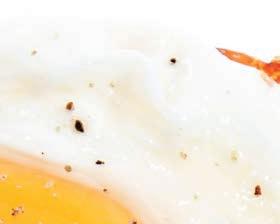
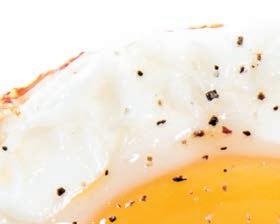
healthnews

SIMPLE DIETARY TWEAKS TO PREVENT DISEASE—AND LIVE LONGER.


30


PERCENT INCREASE IN STROKE RISK WHEN YOU BREATHE IN SECONDHAND SMOKE—EVEN IF YOU’RE A NONSMOKER. SECONDHAND SMOKE CONTAINS MORE THAN 7,000 CHEMICALS, INCLUDING CARBON MONOXIDE AND FORMALDEHYDE, OF WHICH 250 ARE KNOWN TO BE HARMFUL. SOURCE: AMERICAN JOURNAL OF PREVENTIVE MEDICINE
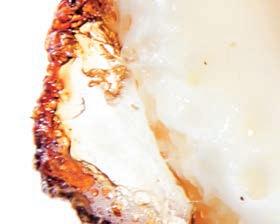
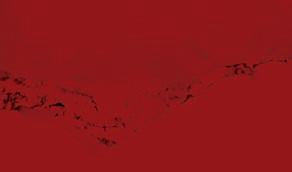

Vitamin C for a Healthier Heart People with higher blood levels of vitamin C have a lower risk of cardiovascular disease, says a study published in The American Journal of Clinical Nutrition. Natural sources of vitamin C are found in citrus fruits and vegetables, like frozen peas, tangerines, grapefruit, broccoli, and brussels sprouts. One Simple Change Eat salads with cooked eggs. Purdue University researchers found that healthpromoting antioxidants in raw vegetables are better absorbed when eaten with eggs. Don’t toss the yolk, either. It’s an excellent source of protein, lipids, and more antioxidants.
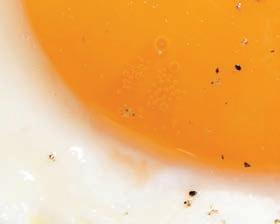
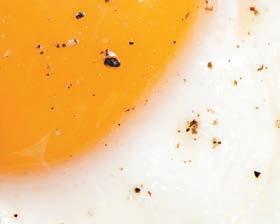

PHOTOGRAPHS BY GETTY IMAGES; STOCKFOOD (PEAS) SPICE THINGS UP Love spicy foods? Researchers tracked the diets of nearly 500,000 people ages 30-79, and those who ate spicy foods almost daily had a 14 percent lower risk of death from cancer, heart disease, respiratory disease, and diabetes because these foods hold antiinflammatory and antioxidant ingredients, like capsaicin. To try: Ground 2 Table salt and sugar-free organic spice blends, like Spicy All Purpose, Chinese Five Spice, and Curry ($2 per pack, ground2table.com).
The Downside of Brown Rice
Fiber aside, brown rice has 80 percent more arsenic than white because its outer layers aren’t removed in the way that white rice’s are. Try an alternative like white basmati rice from California, India, or Pakistan—it has half as much arsenic. You can also rinse raw rice before cooking. Researchers at Queen’s University Belfast also found that a rice percolator that brews the grain like coffee removes the chemical, too.


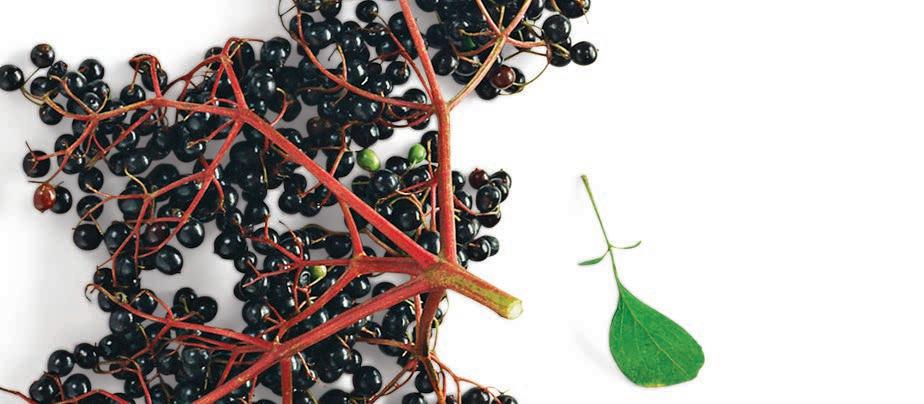



healthwellness
3.08
MILLION SKIN CANCER TREATMENTS PERFORMED LAST YEAR (UP 15 PERCENT SINCE 2011). THE LEADING CAUSE OF SKIN CANCER? EXPOSURE TO ULTRAVIOLET RADIATION FROM THE SUN AND TANNING BEDS. SOURCE: AMERICAN SOCIETY FOR DERMATOLOGIC SURGERY
One Simple Change Join a group. Lots of evidence shows that social networks boost health and longevity. Now research from the Canadian Institute for Advanced Research shows that belonging to groups relevant to you increases selfesteem because they provide a greater sense of purpose.
Traveling Bug Fix? Extract of elderberries helps reduce the duration and severity of travelers’ colds, say Australian researchers. These berries—from sambucus nigra or European elder plant— are rich in anti-inflammatory and anti-viral antioxidants. Study participants took 300 mg of standardized elderberry extract daily, but talk to your doc before self-prescribing, as herbal remedies can interfere with certain meds you might be taking.
Long-Term Relief from Back Pain
Slouching can cause backaches, but there’s more to it than how you carry yourself, says New York chiropractor Dr. Todd Sinett, author of 3 Weeks to a Better Back. Inflammation throughout the body is a root cause. Standing, sitting, and sleeping properly can align your back, as can stretching—but eliminating processed foods, sugar, caffeine, dairy, and extra stress reduce overall inflammation, too.
LOVE YOUR JOB MORE (YES, YOU CAN!) Worries about work may be the reason you can’t sleep, but a new Swedish study shows that n ot getting enough shut-eye contributes to higher stress levels at work, loss of situational control, and more emotional over-reactions. Instead of looking for a new job, try fixing your sleep problems first, say researchers. You may find you don’t hate your job so much after all.
THINK POSITIVELY, LOSE WEIGHT The reason you’re an emotional eater has nothing to do with lack of willpower, says a study in the journal Appetite: It has everything to do with your emotional state. Think negatively and you’re likely to reach for sweets. Change your attitude and outlook, and your cravings may just melt away.

PHOTOGRAPHS BY STOCKFOOD; GETTY IMAGES (FEMALE ON SCALE)









